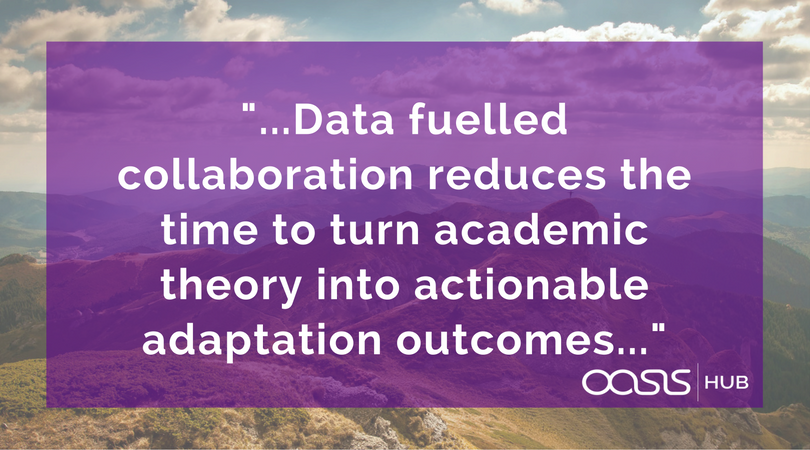
Information has no value until it is shared.
with particular emphasis on helping them to make the results of their efforts more readily available to a wider audience. A broad range of topics was covered including data quality, licensing, pricing, marketing, and support. It reminded me very much of a previous life and the challenges and pitfalls of making data and information available. Almost a quarter of a century ago I joined a company that defined a new category of software. The company was Lotus Development, and the category was "Groupware" or "collaborative computing" to give it a correct label.
This was pre-commercial Internet, local area networks (LANs) were still a relatively new thing, and only worked with real wires. If you needed to connect to a remote service, usually a bulletin board, you did this (often error prone and slowly), using a squawking little box, with flashing LEDs, called a modem.
One of the many things that were interesting about Lotus Development was the vision, which looked to the world of always connected, always mobile, and making the creation, dissemination and access to data and information easy and secure. This was summarized neatly in a tagline that supported the Groupware software, called Notes, which stated, simply: "Information has no value until it is shared." This has been front of mind with me recently, as I talk to more and more academics, researchers and creators of data, in a bid to make the fruits of their labours available for consumption by a wider audience.
Big and small
Fast forward to today. We have so many data it now comes prefixed with the adjective "Big." We carry and wear our compute devices, which are always connected, at speeds sufficient to do full motion video, on the move, all in the palm of your hand.
Investment in research, fuel for the engine
Significant investment is being employed by academic, scientific, government and commercial entities, supporting research into understanding the complexities of the natural environment, weather and climate systems, and the potentially catastrophic risks of each, brought about by a rapidly changing climate.
The rapid commoditization of computing resources and associated analytical tools is allowing scientists and researchers to cover a significantly wider and deeper spatial and temporal context, within specific domains.
Big isn't always better
Commoditization is helping fuel the dramatic increase in the sheer scale and physical size of data, which on the one hand, is indicative of increased granularity, detail, and richness. However, just the sheer physical size of data files can present challenges in storage and distribution, as can its complex technical and scientific representation.
Creating value, by sharing data
For the creators of data, it is not enough to only post their works on a public facing server; there are many more considerations to take into account. Each factor reduces, or better still takes friction out of the system.
Licensing is probably, by far, the most complex and potentially costly aspect of releasing data for consumption by third parties. Should a schedule be created, outlining what needs to be in agreement? Or would the creation of a template be more appropriate? The latter gives more control to the data provider, covering all the liabilities, warranties and the protection of intellectual property (IP). Ideally, a standard agreement would cover 99% of the contract. The commercial aspects are something that also needs to be thought through; this is more than setting the price for the data you are making available. It covers the packaging, licensing, terms and conditions of use. For example, can the consumer of data repackage it with other data? A well-written license agreement can smooth the way through legal and purchasing departments, enabling the data consumer to be up and running quickly.
Advertising, seen by many as a dark art, and a discipline that is often a long way from the thinking of an environmental scientist or engineer. Rather than being an unwanted and additional task for the provider, and seen as an annoyance by the receiver, advertising, and more broadly marketing communications, can be an excellent way to educate and inform.
Ease of consumption. In my discussions with scientists and engineers, data quality is more often than not, the focus of the conversation. This is completely understandable, as often a lifetime of scientific and engineering rigor has been invested in the research. The audience historically has been fellow scientists and technicians. While the importance of quality cannot be overstated, I would also raise the equal importance of ease of consumption. You can have the best data in the world; it can be of the highest quality, the most comprehensive and complete. However, if you cannot help the potential consumer to close the "recognition gap" between it being data, and useful data, for their work, you again introduce friction into the system. Representing the data, spatial through a map, or allowing some basic interrogation and manipulation of the data through filtering and charting, is yet another way to close the recognition gap.
Summary
Collaboration is a key aspect of identifying and constructing adaptation strategies. Giving information more value, by sharing it, underpins this approach. There are some considerations for academic researchers, and others engaged in the creation and publication of data, that can be taken, to reduce or remove friction in the publishing of freely available, and commercial data. These considerations include; licensing, advertising and ease of consumption.
The most vulnerable areas to extreme weather events contain those least able to respond. Data fuelled collaboration reduces the time to turn academic theory into actionable adaptation outcomes.
Do you want to derive value by sharing information and data?
The Oasis HUB enables providers of data and tools to reach a whole new audience, expanding existing, or creating new markets, for users of Cat Models, especially in the insurance sector, where a commercial opportunity exists to publish your work.
